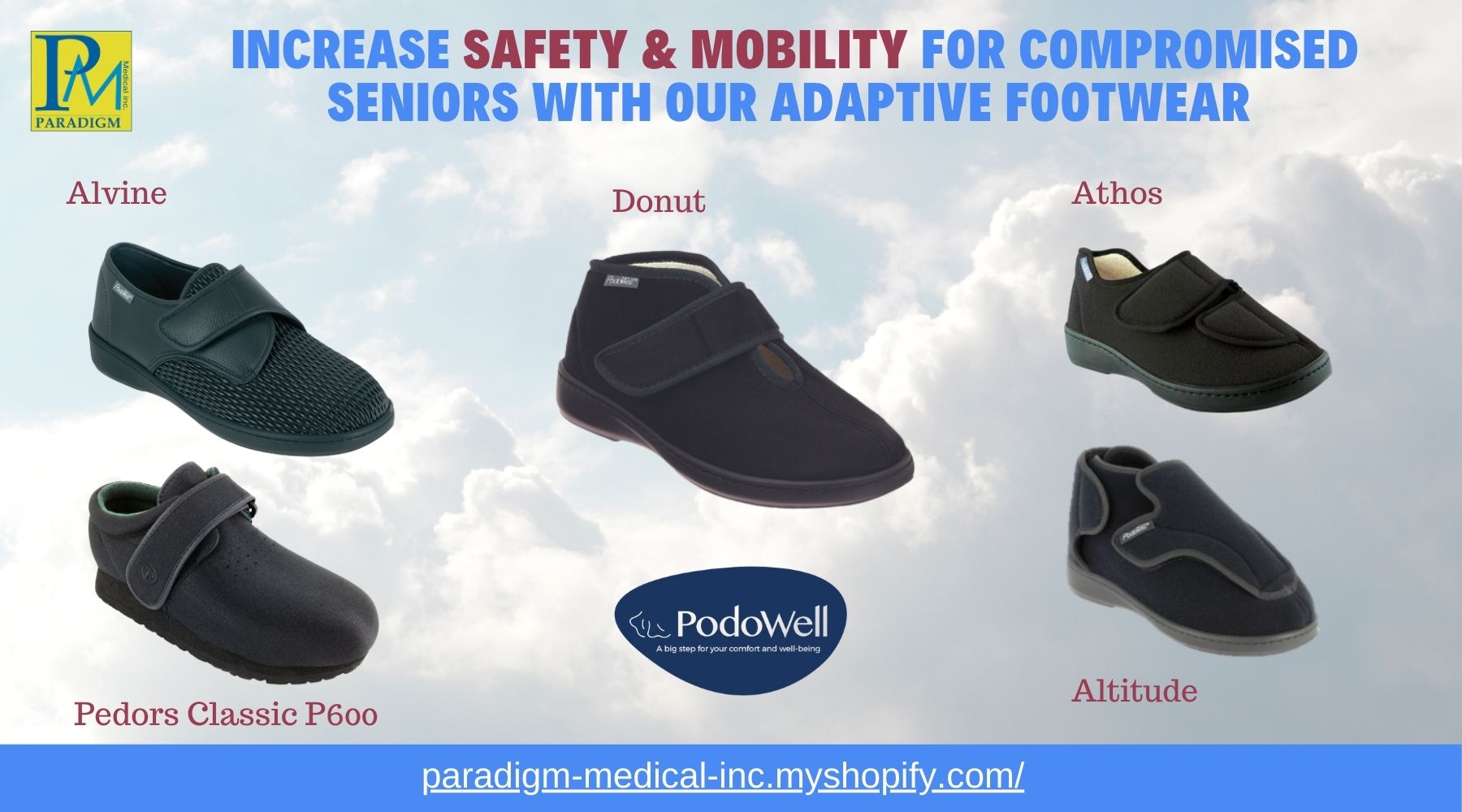Falls are the most common cause of injury among older Canadians and the leading cause of injury-related hospitalizations; and these are on the rise.
It is estimated that 1 in 3 seniors aged 65 years and older are likely to fall at least once. Falls can lead to negative mental health outcomes such as fear of falling, loss of autonomy and greater isolation, confusion, immobilization, and depression.
Poor balance, taking four or more prescription medicines and muscle weakness are the three primary risk factors for falling. Elderly people without these risk factors have a 12% chance of falling, while those with all three have almost a 100% chance.
When evaluating fall prevention strategies, finding seniors affordable, comfortable, therapeutic, and orthopedic footwear is not always a consideration, yet it definitely should be. You can market your business and foot health care credentials in retirement communities and facilities to help mitigate these risks.
An examination of their feet may also shed some insight into some prevailing risk factors, such as swollen feet, unclipped toenails, calluses, sores in between toes, hammertoes, bunions, heel pain, corns and arthritis – which can all lead to a compromised gait which affects balance.
Five things to consider when looking for geriatric footwear:
-
Comfort: When shoes are not comfortable, patients don’t wear them, so this is an extremely important factor. Shoes protect feet from trauma and can help keep elderly people stay active, which prevents muscle atrophy or deterioration. Overall, it can decrease the risk of falls.
-
Weight factor and easy to put on and take off: A lightweight shoe will allow the patient to walk longer and farther, whereas a heavy shoe will tire them much sooner. As well, Velcro closures with adjustable straps are preferred to make it easier for them to don and doff the shoes.
-
Delayed heel strike and toe spring: the shoes’ sole design is crucial to minimize the risk of stumbling and tripping. The heel strike should not occur prematurely, and the toe spring should not grip surfaces like carpet.
-
Accommodation in toe box: A deep toe box with a stretchy and moldable material will provide relief from bunions, overlapping toes, hammertoes, rheumatoid arthritis, and hallux valgus.
-
Affordability: The majority of seniors are on fixed budgets; therefore, cost is a major factor to consider. By keeping the price expectations on par with a pair of good running shoes, the investment in appropriate footwear is justified.
At Paradigm Medical, we offer an extensive range of shoes for seniors who are at risk of falling, at home or outdoors.
ORDER PODOWELL AND PEDORS' SAFE AND COMFORTABLE SHOES FOR COMPROMISED SENIORS
ABOVE PODOWELL STYLES:
Athena, Addax, Donuts Men and Women sizes: 36-46
Alexis, Athos Men and Women sizes: 36-48
One Width that fits Wide and X-Wide Feet.
ORDER PODOWELL AND PEDORS' SAFE AND COMFORTABLE SHOES FOR COMPROMISED SENIORS
Featuring Podowell and Pedors Shoes that compromised seniors will WANT to wear because of their COMFORT and SAFETY features.
SHOE FEATURES
1) Anti-Skid Outsoles: to avoid trips and falls,
2) Protect the Feet: from dangerous objects,
3) Stability & Support: orthopedic shoe for all day comfort,
4) Machine Washable: to keep shoes sanitized.
Pedors Classic P600
Black (600), Beige (601), Brown (605)
Men’s sizes: 5 – 15 (available in half sizes)
Women’s sizes: 3 – 17 (available in half sizes)
Width: Medium, Wide, X-Wide
ORDER PODOWELL AND PEDORS' SAFE AND COMFORTABLE SHOES FOR COMPROMISED SENIORS









